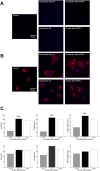Time-dependent effects of ultraviolet and nonthermal atmospheric pressure plasma on the biological activity of titanium
- PMID: 27627871
- PMCID: PMC5024128
- DOI: 10.1038/srep33421
Time-dependent effects of ultraviolet and nonthermal atmospheric pressure plasma on the biological activity of titanium
Erratum in
-
Corrigendum: Time-dependent effects of ultraviolet and nonthermal atmospheric pressure plasma on the biological activity of titanium.Sci Rep. 2016 Nov 11;6:36430. doi: 10.1038/srep36430. Sci Rep. 2016. PMID: 27834351 Free PMC article. No abstract available.
Abstract
Here, we evaluated time-dependent changes in the effects of ultraviolet (UV) and nonthermal atmospheric pressure plasma (NTAPPJ) on the biological activity of titanium compared with that of untreated titanium. Grade IV machined surface titanium discs (12-mm diameter) were used immediately and stored up to 28 days after 15-min UV or 10-min NTAPPJ treatment. Changes of surface characteristics over time were evaluated using scanning electron microscopy, surface profiling, contact angle analysis, X-ray photoelectron spectroscopy, and surface zeta-potential. Changes in biological activity over time were as determined by analysing bovine serum albumin adsorption, MC3T3-E1 early adhesion and morphometry, and alkaline phosphatase (ALP) activity between groups. We found no differences in the effects of treatment on titanium between UV or NTAPPJ over time; both treatments resulted in changes from negatively charged hydrophobic (bioinert) to positively charged hydrophilic (bioactive) surfaces, allowing enhancement of albumin adsorption, osteoblastic cell attachment, and cytoskeleton development. Although this effect may not be prolonged for promotion of cell adhesion until 4 weeks, the effects were sufficient to maintain ALP activity after 7 days of incubation. This positive effect of UV and NTAPPJ treatment can enhance the biological activity of titanium over time.
Figures








References
-
- Fender D., Harper W. M. & Gregg P. J. The trent regional arthroplasty study-Experiences with a hip register. J Bone Joint Surg Br 82B, 944–947 (2000). - PubMed
-
- Drees P. et al. Mechanisms of Disease: molecular insights into aseptic loosening of orthopedic implants. Nat Clin Pract Rheumatol 3, 165–171 (2007). - PubMed
-
- Simonis P., Dufour T. & Tenenbaum H. Long-term implant survival and success: a 10–16-year follow-up of non-submerged dental implants. Clin Oral Implants Res 21, 772–777 (2010). - PubMed
-
- Fransson C., Wennstrom J. & Berglundh T. Clinical characteristics at implants with a history of progressive bone loss. Clin Oral Implants Res 19, 142–147 (2008). - PubMed
MeSH terms
Substances
LinkOut - more resources
Full Text Sources
Other Literature Sources

